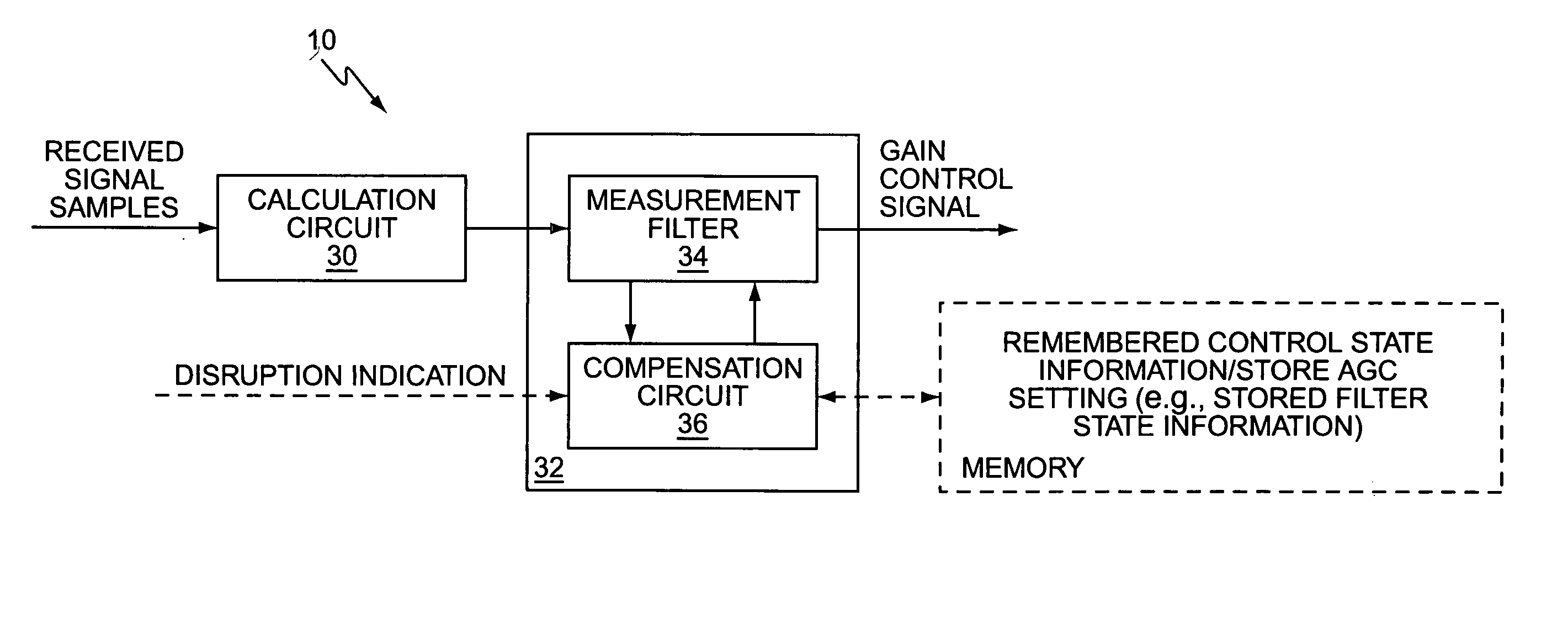Method and apparatus for automatic gain control of a wireless receiver
a wireless receiver and automatic gain control technology, applied in the field of wireless communication receivers, can solve the problems of temporary saturation problems, significant signal disruption, and disruption of the convention agc function, and achieve the effect of avoiding or reducing receiver saturation
- Summary
- Abstract
- Description
- Claims
- Application Information
AI Technical Summary
Benefits of technology
Problems solved by technology
Method used
Image
Examples
Embodiment Construction
[0021]FIG. 1 is a diagram of an automatic gain control (AGC) circuit 10 according to one or more embodiments of the present invention. AGC circuit 10 is associated with or included in a receiver 12, such as the type of receive chain circuit that might be included in a radio base station within a wireless communication network. Receiver 12 is associated with an antenna 14 and, by way of non-limiting example, comprises a low-noise amplifier (LNA) 16, analog filter circuit 18, a down-converter circuit 20, and an analog-to-digital converter (ADC) circuit 22.
[0022] In operation, receiver 12 obtains an incoming received signal via antenna 14, which it amplifies, filters, and down-converts to a baseband frequency using LNA 16, filter 18, and down-converter 20. Down-converter 20 may comprise two or more mixing stages, and thus may take the received signal from its carrier frequency band to an intermediate frequency (IF), and then down to a baseband frequency. Alternatively, down-converter ...
PUM
 Login to View More
Login to View More Abstract
Description
Claims
Application Information
 Login to View More
Login to View More - R&D
- Intellectual Property
- Life Sciences
- Materials
- Tech Scout
- Unparalleled Data Quality
- Higher Quality Content
- 60% Fewer Hallucinations
Browse by: Latest US Patents, China's latest patents, Technical Efficacy Thesaurus, Application Domain, Technology Topic, Popular Technical Reports.
© 2025 PatSnap. All rights reserved.Legal|Privacy policy|Modern Slavery Act Transparency Statement|Sitemap|About US| Contact US: help@patsnap.com



